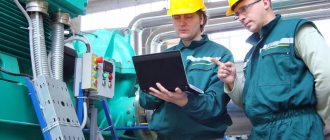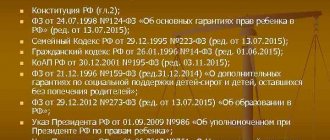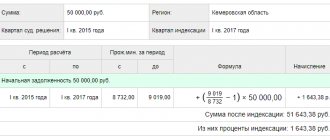Labor protection is a system for preserving the life and health of workers in the process of work, which includes legal, socio-economic, organizational, technical, sanitary and hygienic, treatment and preventive, rehabilitation and other measures.
Working conditions are a set of factors in the working environment and the labor process that affect the performance and health of the employee.
A harmful production factor is a production factor, the impact of which on an employee can lead to illness.
A hazardous production factor is a production factor, the impact of which on a worker can lead to injury.
Safe working conditions are working conditions under which workers are excluded from exposure to harmful and (or) hazardous production factors or their exposure levels do not exceed established standards.
Workplace is a place where an employee must be or where he needs to arrive in connection with his work and which is directly or indirectly under the control of the employer.
Personal and collective protective equipment for workers are technical means used to prevent or reduce the impact of harmful and (or) hazardous production factors on workers, as well as to protect against pollution.
The occupational safety management system is a complex of interrelated and interacting elements that establish policies and goals in the field of occupational safety for a particular employer and procedures for achieving these goals. Typical provision
on the occupational safety and health management system is approved by the federal executive body exercising the functions of developing state policy and legal regulation in the field of labor, taking into account the opinion of the Russian Tripartite Commission for the Regulation of Social and Labor Relations.
(part eight as amended by the Federal Law
dated December 28, 2013 N 421-FZ)
Production activity is a set of actions of workers using means of labor necessary to transform resources into finished products, including the production and processing of various types of raw materials, construction, and the provision of various types of services.
Labor protection requirements - state regulatory labor protection requirements, including labor safety standards, as well as labor protection requirements established by rules and instructions
on labor protection.
(Part ten was introduced by Federal Law
dated June 30, 2006 N 90-FZ, as amended.
Federal Law
of July 24, 2009 N 206-FZ)
State examination of working conditions - assessment of the compliance of the object of examination with state regulatory requirements for labor protection.
(part eleven was introduced by Federal Law
dated June 30, 2006 N 90-FZ)
Part twelve became invalid on January 1, 2014. - The federal law
dated December 28, 2013 N 421-FZ.
Occupational safety standards are rules, procedures, criteria and standards aimed at preserving the life and health of workers in the process of work and regulating the implementation of socio-economic, organizational, sanitary and hygienic, treatment and preventive, rehabilitation measures in the field of labor protection.
(Part thirteen was introduced by Federal Law
dated July 24, 2009 N 206-FZ)
Occupational risk is the likelihood of harm to health as a result of exposure to harmful and (or) hazardous production factors when an employee performs duties under an employment contract or in other cases established by this Code and other federal laws. The procedure for assessing the level of occupational risk is established by the federal executive body that carries out the functions of developing state policy and legal regulation in the field of labor, taking into account the opinion of the Russian Tripartite Commission for the Regulation of Social and Labor Relations.
(part fourteen was introduced by Federal Law
dated July 18, 2011 N 238-FZ)
Occupational risk management is a set of interrelated activities that are elements of the occupational safety management system and include measures to identify, assess and reduce levels of occupational risks.
(part fifteen as amended by the Federal Law
dated December 28, 2013 N 421-FZ)
ConsultantPlus: note.
From 01.03.2022 Ch. 33 is supplemented by Art. 209.1 ( FZ
dated 07/02/2021 N 311-FZ).
See future edition
.
ConsultantPlus: note.
From 03/01/2022 Art. 210 is stated in a new edition ( Federal Law
dated 07/02/2021 N 311-FZ).
See future edition
.
Newly created workplace
According to Article 209 of the Labor Code of the Russian Federation, a workplace is a territory (place) where an employee is obliged to work or where he must arrive in connection with his work. It must be controlled by the employer directly or indirectly. A newly created workplace is a place where an employee has begun to perform work functions that were not previously performed by anyone. The new workplace must be put into operation so that the new working conditions can be assessed directly during the work process. The moment of commissioning of a newly created place is considered to be the start of the production process. For example, a new driver’s workplace will be put into effect at the moment when he starts working behind the wheel of a vehicle that was previously not driven by anyone at this enterprise.
What is labor protection - the boundaries of definition
Since labor protection activities are supervised by the state, the definition of what labor protection as a system is includes only:
- work that is performed on the basis of the concluded TD;
- a workplace controlled by the employer;
- legal norms (health safety standards established by state regulations, Labor Code of the Russian Federation, local norms);
- activities controlled by the Ministry of Labor of the Russian Federation. It is through the Ministry of Labor that the state exercises most of its powers in the field of occupational safety.
The concept of labor protection does not apply to other areas of activity that bring profit to the employer:
- industrial sanitation;
- Fire safety;
- industrial safety of hazardous production facilities, facilities that may become dangerous in certain circumstances;
- safety precautions. It is still difficult for many workers to accept that TB and occupational safety are completely different definitions, but according to the legislation of the Russian Federation this is exactly the case;
- safety of products, catering services, medical care;
- technological safety (for example, operation of machines, power plants, which is carried out according to the manufacturer’s electronic documentation);
- safety of buildings for any purpose (residential, industrial);
- safety of the learning process in educational institutions, road traffic;
- performing work outside of labor relations: individual entrepreneurs, cooperative organizations, workers under the GPA, “people in uniform” (military, law enforcement);
- “special” types of security - protection from chemicals, radiation, terrorists, natural disasters.
Various working conditions
Article 209 of the Labor Code of the Russian Federation, part 2, defines the term “working conditions”. This is a combination of factors in the environment surrounding employees and the work process, which generally affects a person’s health, well-being and performance. That is, a lot depends on working conditions, and, most importantly, the efficiency of work itself. Working conditions undergo a special assessment (SOUT) and, in accordance with it, are divided into types. Information about what SOUT is and what conditions exist is contained in Federal Law No. 426 dated December 28, 2013. SOUT is a set of measures to identify the influence of harmful and dangerous factors on the work process. Such monitoring makes it possible to minimize the possibility of unfavorable conditions arising, and, if they are identified, to assign appropriate compensation to employees. There is also a definition of “state examination of working conditions”. It is also contained in Article 209 of the Labor Code of the Russian Federation and implies compliance with the working conditions of the state. safety and labor protection requirements. However, SOUT and state. expertise are different concepts. Specialist. The assessment must be carried out by all organizations without exception once every 5 years. There are no exceptions for small businesses. Even if the company has only two employees, SOUTH is necessary. Let's return to the types of working conditions, which differ in the degree of harmfulness or danger. Federal Law No. 426 distinguishes 4 classes of labor conditions (TL) according to this criterion. Moreover, the 3rd class is further divided into subclasses. So, there are TUs:
- optimal - when there are no negative factors or it does not exceed standard levels accepted as safe;
- acceptable - in which there is an influence of negative factors, but their level does not exceed the standards, and the employee’s body can recover by the beginning of the next shift;
- harmful - in which the negative impact exceeds the standard level;
- dangerous - in which the employee is exposed to negative factors throughout the entire working day, and the consequences of exposure entail a threat to life and the risk of occupational diseases.
Harmful conditions (class 3) are divided into subclasses depending on the degree of harm:
- 1st degree - after the action of negative factors, the employee’s body condition takes longer than necessary to return to normal (that is, it usually does not have time to recover before the start of the next shift);
- 2nd degree - the effect of negative factors can lead to persistent functions. changes in the body that cause the development of the initial forms of prof. mild illnesses after 15 years or more;
- 3rd degree - negative factors can lead to the development of prof. diseases of mild and moderate severity with loss of limited ability to work during work;
- 4th degree - negative factors can lead to severe forms of prof. diseases with loss of general ability to work during work.
Who is a labor protection specialist?
A security specialist is a hired employee who deals with labor protection in an organization.
In small companies, one occupational safety specialist is enough. If an employer does not want to hire an occupational safety specialist, he should deal with occupational safety himself or entrust it to an employee (Article 217 of the Labor Code). There is an option to outsource this work.
In large enterprises with a staff of more than 50 people, a labor protection service is created. Read more here: Organization of labor protection at an enterprise.
Dispensing milk “for being harmful”
According to Part 3 of Article 209 of the Labor Code of the Russian Federation, harmful production. factor is a negative factor, the effect of which can lead to illness of an employee. These are, for example, chemical, biological, physical factors. It is well known that in some industries workers are given milk “for being harmful.” This happens for a reason and is legally justified. The obligation to provide milk or equivalent products to citizens engaged in hazardous production is enshrined in Article 222 of the Labor Code of the Russian Federation. The Ministry of Health has approved a whole list of harmful factors, under the influence of which in production it is recommended to consume milk and other products equivalent in the presence of microelements. There are also rules and conditions for the free distribution of dairy products to employees, also developed by the Ministry of Health. If labor or coll. the agreement allows, then the delivery of milk can be replaced by a cash payment equal to the cost of dairy products.
How to identify harmful, dangerous working conditions and what applies to them
Every employer must conduct a special assessment. Safety is compromised if impacts are identified:
- toxic substances;
- allergens;
- pathogenic bacteria;
- low or high temperature;
- noise;
- vibrations;
- various types of radiation.
Determination of hazardous conditions for each production factor
The hazard class is determined by the level of deviation from the norm, and the combination of these indicators is also taken into account. Thus, an excess according to the SOUT is recorded if:
- biological component - pathogenic flora and bacteria of group 1;
- vibration - 139 dB, local one less;
- THC index 27.9–31°C or below 6–12°C, depending on the type of work performed;
- ultrasound - 40 dB;
- infrasound - 138 dBLin;
- background noise - 115 dBA;
- The intensity of thermal radiation is 2800 W/m2 with an exposure dose above 4800 W/h, which is included in the definition of harmful working conditions.
Data may vary slightly depending on the time spent under the adverse influence and the degree of impact on the body. At the same time, the type of human activity, or more precisely, the level of his energy consumption, is important for classification. It is worth considering that chemical substances have their own maximum permissible concentration standards. They are checked against the tables of Order No. 33n. It is not allowed to exceed the data by 20-50 times. There are options and they are considered in each specific case. Heaviness, tension, lighting are not taken into account.
Determination of hazardous conditions under combined influence of factors
An expert opinion is issued after a complete examination and measurement of data, with indicators for each item first being displayed, and then they are considered as a whole. Thus, the conclusion may be disappointing for the employer, despite the fact that the tolerances have been met for certain parameters.
Rules for conducting analysis:
- two or more harmful components with a hazard class of 3.2–3.4 together increase the threat by 1 point;
- it is possible that indicators may decrease when personal protective equipment with certain characteristics is issued at the workplace;
- The time an employee spends in hazardous working conditions must be taken into account.
It is possible to improve the situation by providing PPE and reducing the period a person spends in a disadvantaged area.
A note about the harmfulness of work in the employment contract
According to Article 57 of the Labor Code of the Russian Federation, it is necessary to include a list of conditions if they fit the definition of dangerous or do not comply with hygienic and other standards. Along with the main functions, the name of the specialization is written down in accordance with the staffing table, indicating the benefits provided and compensation for hard work, regime, allowances and bonuses, with a note of characteristics in the workplace.
If it is planned to reduce the time spent in an unfavorable zone, then this must also be recorded in the document.
Additional paid leave under Article 117 of the Labor Code of the Russian Federation is at least 7 days and is provided to those who work in underground and open-pit mining, in areas of high radiation levels, and in other unfavorable factors, confirmed by the certification of the SOUT. Replacement with monetary compensation is not possible.
Factors and list of harmful conditions
These include any indicator that affects health and goes beyond the accepted standards. When certifying and assigning a class, special attention is paid to:
- increased content of dust and suspended matter in the air;
- temperature conditions;
- degree of illumination, as an additional component in a comprehensive assessment;
- the presence of pathogens with their possible leakage;
- noise, influence of ultrasound and infrasonic vibrations;
- use of high-hazard chemicals;
- vibration;
- abnormal physical activity;
- long stay in unfavorable living conditions.
The conclusion is given by the SOUT certification commission, assigning the appropriate class after measurements and comprehensive analysis.
Who is prohibited from working under such conditions?
The manager does not have the right to enter into an employment contract if the security level is below the first, with minor employees, pregnant women, or disabled people. Women of childbearing age will most likely be denied employment if the vacancy involves increased physical activity, is carried out in extreme conditions, or involves the use of reagents.
OT regulatory requirements (Article 211)
The labor safety standards established by the state are mandatory for all heads of organizations, regardless of the number of employees they employ and what type of work they perform (Federal Law No. 90-FZ of June 30, 2006).
Important! Changes, additions, as well as the development of individual chapters of documents related to occupational safety requirements, have the right to be made only by the Government of the Russian Federation, which takes into account the opinion of the tripartite commission regulating social and labor relations (FZ No. 206-FZ dated July 24, 2009 and No. 90-FZ dated June 30 .2006).
OSH regulations must be followed by all employers
What are the responsibilities of an industrial safety engineer?
The scope of activities of an industrial safety specialist includes:
- control and verification of compliance with industrial safety rules and requirements;
- organizing and performing a number of examinations and production controls;
- development of a plan and schedule of measures to localize accidents and eliminate their consequences;
- preparing employees of the organization for industrial safety certification;
- informing employees about changes in industrial safety requirements, etc.
What professions exist with harmful and dangerous conditions?
The official list includes:
- mining and metallurgical industries;
- employees of chemical companies;
- coke and thermoanthracite production;
- specialists in the field of ammunition and explosives;
- laboratory assistants and scientists from biological research institutes working with pathogenic flora, bacteria and viruses;
- printing, medicine, glassblowing;
- members of emergency response teams;
- electric train drivers.
The list varies, changes are fixed by law.
Issues of labor protection in the Labor Code of the Russian Federation
The Labor Code of the Russian Federation is the main legislative act regulating labor relations between employees and individual entrepreneurs or legal entities of all forms of ownership. The main tenet of the document is the inalienable right of every citizen of our country to paid work in safe conditions. To ensure the protection of the life and health of workers employed in any sphere of the economy, the Labor Code of the Russian Federation contains an entire section devoted to labor protection issues. But the rules, requirements and standards of labor protection are contained not only in the X section of the Code of the same name, but also in the articles of other sections of the document.
Why is certification carried out?
Production facilities regularly undergo special assessments of the environment in which people work. Depending on the type of activity, the inspection period varies. The goal is to identify the compliance of the stated working conditions with real ones and assess the impact on human health. The employer enters into a civil contract with the expert for the provision of services. The following must be checked:
- enterprises with mechanisms, equipment, apparatus;
- vehicles;
- there are sources of danger. may have a detrimental effect on health;
- when using electronic devices, mechanized tools;
- storage and transportation of raw materials and supplies is carried out.
If measurements pose a threat to members of the SOUT commission and laboratory employees, class 4 is assigned automatically.
Concept of OT (Article 209)
This article deciphers the various concepts associated with OT in any of the existing organizations.
| Types of concepts used in articles on labor protection | Explanation of terms |
| Occupational safety (OHS) | The general concept of this meaning is to describe the system of preserving the health and life of citizens in the process of performing their labor functions. The system includes social, legal, economic, organizational, technical, treatment and preventive, sanitary and hygienic, rehabilitation and other measures. |
| Working conditions (WT) | A complex of factors consisting of the labor process, the production environment, which directly affects the health and performance of a working citizen. |
| Harmful production factor (HPF) | A factor that negatively affects human health, leading to various diseases. |
| Hazardous production factor (OPF) | Factor leading to industrial injuries of varying severity |
| Safe working conditions (SWC) | Working conditions under which the negative impact of hazardous and harmful factors on the health of workers is excluded or they are within the limits of established standards. |
| Workplace (WP) | The place where the employee performs his direct functions or to which he must arrive to perform certain work. RM is indirectly or directly under the control of the head of the organization. |
| Personal and collective protective equipment for workers (SI and KZR) | Technical and other means used to reduce or completely prevent the influence of hazardous and harmful production factors on the health of workers, as well as to protect the environment from pollution. |
| Occupational Safety and Health Management System (OSMS) | Activities that define the goals and policies of labor protection and procedures for achieving set goals at a particular enterprise. OSH system standards are approved by federal and other executive authorities. In this case, the opinion of the tripartite commission on the normalization of labor and social relations is taken into account. |
| Production activities (PD) | The actions of an employee using means of labor intended to transform resources or raw materials into finished products are the production of various products, construction, and the provision of various types of services. |
| Occupational safety requirements (OSH) | State standard requirements for occupational health and safety, expressed in instructions and rules for occupational safety. |
| State examination of labor protection (SEOT) | State standards for the assessment of a specific object, for which an examination is carried out for compliance with established requirements. |
| Occupational Safety and Health Standards (OSS) | Labor standards include standards, rules and procedures that are aimed at protecting the health and life of working citizens in the process of performing their labor functions, as well as regulatory organizational, social, economic, treatment and preventive, sanitary and hygienic and rehabilitation measures in labor protection. |
| Occupational risk (PR) | This is the possibility of harm to an employee’s health as a result of the influence of dangerous or harmful production factors on him during the period the citizen performs his immediate duties, specified by the TD. The assessment of occupational risk is determined in accordance with the standards established at the federal level, as well as taking into account the opinion of the tripartite commission for the regulation of labor and social relations. |
| Occupational Risk Management (OPR) | A set of measures combined into a system that includes the identification, assessment, reduction or elimination of professional risks. |
Labor protection at any enterprise should work both at the level of the entire organization and in relation to each working citizen
Standards of the Labor Code of the Russian Federation regulating labor protection of certain categories of workers
The Labor Code specifically protects the right to work in safe conditions for the most vulnerable categories of workers. Section XII of the Labor Code of the Russian Federation stipulates guarantees, norms and rules regarding the organization of labor of such categories of citizens as women, minor employees, disabled people, people with dependents, persons working in seasonal, rotational work or remotely.
Women's labor protection
- Article 253 of the Labor Code of the Russian Federation limits the use of female labor in work that is harmful or dangerous to the female body. Such work includes lifting heavy objects, duties related to the operation of dangerous and harmful substances, mechanisms, etc. The lists of work for which it is prohibited to involve women, and positions for which the employment of females is not recommended, are regularly reviewed and changed. Improvements in technology make it possible to make production processes safer, and many professions that were prohibited for women 5 years ago have already been removed from the List (Order No. 512n of the Ministry of Labor of the Russian Federation).
- It is important that Article 253 of the Labor Code states that the employer has the right to involve women in potentially dangerous and harmful work if he takes measures to reduce the danger to the female body. For example, women should not be required to lift heavy objects manually. But if female workers have mechanisms or tools at their disposal to reduce the load on the body when lifting heavy objects, they can perform such work.
- As for pregnant women and women with toddlers, the labor protection requirements of the Labor Code of the Russian Federation for these categories of citizens are even more stringent. In particular, Article 259 of the Labor Code of the Russian Federation prohibits sending such employees on long business trips, leaving them overtime, calling them to work at night, weekends and holidays. An exception is the written consent of a pregnant woman or an employee with children under 3 years of age for a business trip or night/overtime work.
Labor protection for workers under 18 years of age
- The Labor Code of the Russian Federation allows the employment of minors for permanent or seasonal work. According to Article 270 of the Labor Code of the Russian Federation, either standard or reduced production standards can be established for employees under 18 years of age. Increasing the standards above those specified in the regulations and rules regarding labor standards in relation to minor workers is not allowed.
- Workers under 18 years of age, according to Article 265 of the Labor Code of the Russian Federation, are prohibited from being employed in harmful and dangerous industries, or from being assigned to work with harmful/hazardous substances, tools or materials. The Code also prohibits employers from employing minors in positions that are dangerous to the moral development of a teenager (selling alcoholic beverages, cigarettes, 18+ goods, working in casinos, nightclubs, etc.).
- Labor protection standards for minors also apply to overtime work, work at night and on weekends. Article 268 of the Labor Code of the Russian Federation directly prohibits an employer from leaving employees under 18 years of age overtime and at night, as well as sending them on long business trips. The exception is cases when the minor’s work is related to concert activities and directly involves going on tour and performing late in the evening.
- Before employing an employee under 18 years of age in a particular position, the employer is obliged to pay for him to undergo a medical examination (Article 266 of the Labor Code of the Russian Federation). Also, according to this article, the employer is required to organize, at the expense of the enterprise, annual medical examinations for minor workers.
- Familiarize personnel working remotely with labor safety standards and safety instructions for the operation of equipment provided or recommended for the performance of official duties;
- Insure employees against accidents while performing their official duties;
- In the event of an emergency or diagnosis of an occupational disease in a remote worker, register and investigate these cases; 6.3.1.4. When protecting the labor of remote workers, be guided by the requirements of the Labor Code of the Russian Federation, federal laws and regulations (orders) of state supervisory authorities.
Labor protection for people working remotely
With employees working remotely, the employer must conclude an appropriate employment contract that meets all the standards of Section III of the Labor Code. But the requirements of the Labor Code of the Russian Federation for organizing labor protection for remote workers are much more flexible.
According to Article 312.3 of the Labor Code of the Russian Federation, the employer is obliged to:
In addition to the obligations listed above in the field of labor protection, the Labor Code of the Russian Federation requires the employer to fulfill all obligations specified in the employment contract with the employee. It is also important that when it comes to remote work with hazardous or harmful substances, the employer must take care of personal protective equipment for employees.
Labor protection of persons working in harmful or dangerous conditions
- For personnel employed in hazardous or hazardous industries or working in areas with an unfavorable climate, Articles 146-149 of the Labor Code of the Russian Federation guarantee increased wages and special leave conditions.
- Article 222 of the Labor Code of the Russian Federation, in turn, requires the employer to provide such employees with milk or other food of equivalent health benefits. Also, the company’s management is required to either provide employees who work with harmful or hazardous materials with therapeutic and preventive nutrition every working day, or compensate them for the cost of such a diet.
- Another responsibility of an employer running an enterprise with harmful or dangerous working conditions is to provide employees with certified personal protective equipment and a place to store them. This norm is prescribed in Article 221 of the Labor Code.
What to do if hazardous working conditions are discovered at work
If a conclusion is issued about the presence of harmful components, then you should not close the enterprise. There are a set of measures that can compensate for this fact, as well as ways to reduce the negative impact on employees.
Thus, in some cases, the situation can be corrected by issuing personal protective equipment, providing additional leave, calculating salary bonuses, and organizing preventive nutrition.
Commissions (committees) on labor protection (Article 218)
Occupational safety commissions can be created on the initiative of the enterprise’s employees or its manager.
Such a committee includes representatives of the organization’s management, trade unions, or nominees from the work collective.
The standard regulation on the occupational safety commission was approved by the federal authorities that are involved in the development and regulation of this legal area (Federal Law No. 90-FZ of June 30, 2006).
The commission for control over occupational safety must coordinate all activities with trade union bodies, the head of the enterprise, as well as with the employees who initiated the investigation.
Committee members must coordinate their actions, which should be aimed at fulfilling the requirements for occupational safety and preventing occupational injuries and diseases. In addition, the commission carries out inspections of the safety organization at the workplace of each employee, and the results of this process are communicated to the employees of the enterprise. Rational proposals are drawn up in the form of an occupational safety agreement, which is attached to the collective agreement.
The next chapter of the Labor Code of the Russian Federation, No. 36, stipulates the rights of enterprise employees regarding occupational safety.






